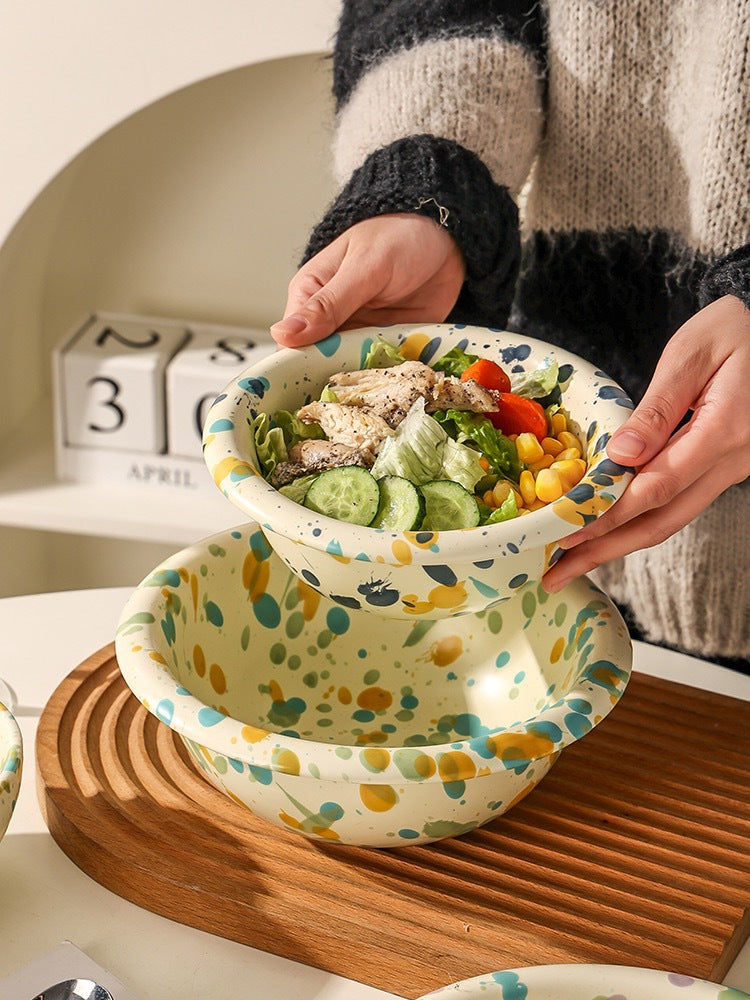Abstract:
Ceramics, with their rich history and enduring beauty, have graced homes and tables for centuries. From delicate Qingfa porcelain to rustic stoneware, these versatile pieces add a touch of elegance and functionality to our daily lives. However, like any treasured possession, ceramics require proper care to maintain their luster and extend their lifespan. This comprehensive guide delves into the intricacies of cleaning, storing, and protecting your ceramic collection, ensuring that your cherished pieces continue to grace your home for generations to come.
Keywords: Qingfa ceramics, daily ceramics, crafts ceramics, home decor, flower vase, flower pot, dinnerware, cookware
Cleaning Techniques: Proper Washing Methods and Precautions
The first step in preserving your ceramics is proper cleaning. While some ceramics may be dishwasher-safe, handwashing is generally recommended, especially for delicate pieces or those with intricate designs. Here's how to gently cleanse your ceramic treasures:
Gather Your Supplies: Before you begin, assemble your cleaning essentials: warm, soapy water, a soft sponge or microfiber cloth, and a gentle dishwashing liquid. Avoid harsh detergents, abrasive scrubbers, and scouring pads, as these can damage the glaze and delicate surfaces.
Rinse and Soak: Begin by rinsing the ceramic piece under warm water to remove loose dirt or debris. For stubborn stains or stuck-on food, consider soaking the piece in warm, soapy water for 15-30 minutes.
Gentle Cleaning: Using your soft sponge or microfiber cloth, gently wash the ceramic surface with the soapy water. Pay attention to crevices and intricate designs, but avoid excessive scrubbing that could scratch the glaze.
Thorough Rinsing: Once the ceramic piece is clean, rinse it thoroughly under warm water to remove all traces of soap residue. Leave no soap pockets, as these can cause streaks or discoloration when dry.
Air Drying: Allow the ceramic piece to air dry completely on a clean dish rack or absorbent towel. Avoid using heat sources like ovens or microwaves, as these can cause thermal shock and cracking.
Storage Recommendations: Preserving Your Ceramics for Longevity
Proper storage is crucial for maintaining the integrity and beauty of your ceramics. Here are some tips for keeping your ceramic collection in top condition:
Avoid Overcrowding: Store your ceramics with ample space between each piece to prevent accidental bumps or scratches. Use dividers or shelves to create organized storage solutions.
Padding and Protection: When storing delicate pieces, consider using soft padding or wrapping paper to provide extra cushioning. This is especially important for items with intricate designs or delicate handles.
Temperature Control: Store your ceramics in a cool, dry place away from direct sunlight or heat sources. Extreme temperature fluctuations can cause cracking or deterioration of the glaze.
Avoid Stacking: Avoid stacking heavy ceramics directly on top of delicate pieces. This can cause undue pressure and potential damage. Use designated shelves or stands for each item.
Handling with Care: Always handle your ceramics with care, especially when moving or displaying them. Avoid sudden movements or rough handling that could cause them to topple or break.
Preventing Breakage: Avoiding Common Ceramic Damage and Remedies
Despite our best efforts, accidents happen. Here are some common causes of ceramic breakage and how to prevent them:
Thermal Shock: Sudden temperature changes, such as placing a hot ceramic piece into cold water, can cause thermal shock, leading to cracks or breakage. Always allow ceramics to cool gradually before washing or storing.
Impact and Dropping: Dropping or bumping ceramics can cause chips, cracks, or even shattering. Exercise caution when handling these pieces, especially on slippery surfaces.
Improper Cleaning: Using harsh cleaning methods or abrasive materials can damage the glaze and weaken the ceramic structure, making it more susceptible to breakage. Follow the gentle cleaning guidelines outlined above.
Storage Mishaps: Overcrowded storage or stacking heavy items on top of delicate pieces can lead to accidental breakage. Store your ceramics carefully and ensure they have ample space.
Wear and Tear: Over time, ceramics may show signs of wear and tear, such as minor chips or fading glaze. If these imperfections become noticeable, consider professional restoration or replacement.
Conclusion
Ceramics, with their timeless elegance and versatility, enrich our homes and enhance our daily lives. By following the comprehensive care guidelines outlined in this guide, you can ensure that your ceramic collection remains a source of beauty and functionality for years to come. From proper cleaning techniques to effective storage strategies, these practices will preserve the integrity of your ceramics, allowing their unique charm to grace your home for generations.

